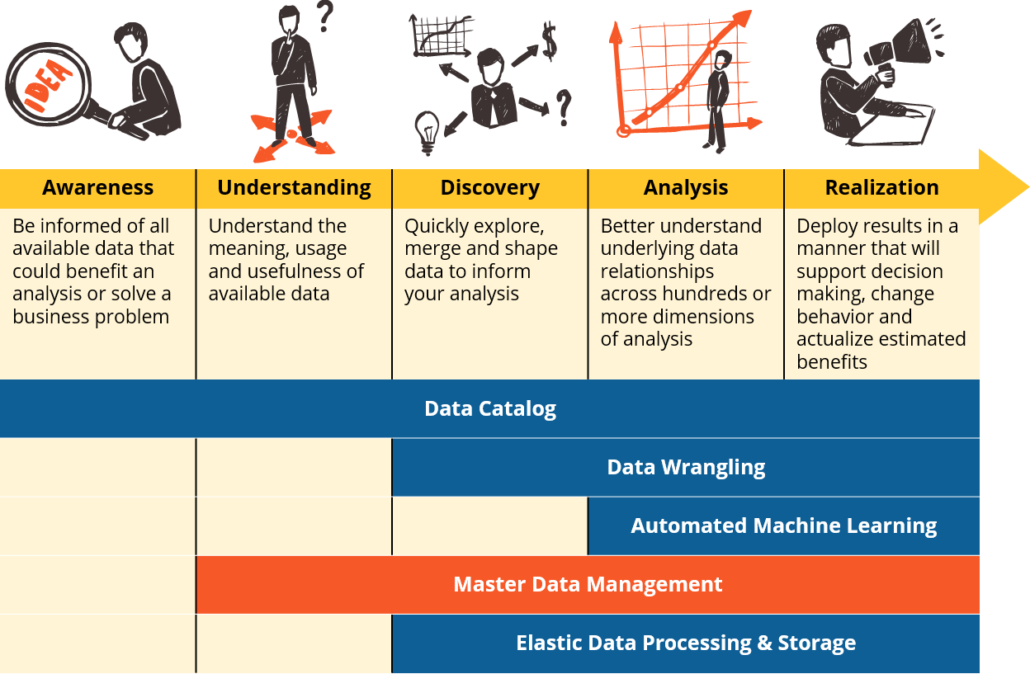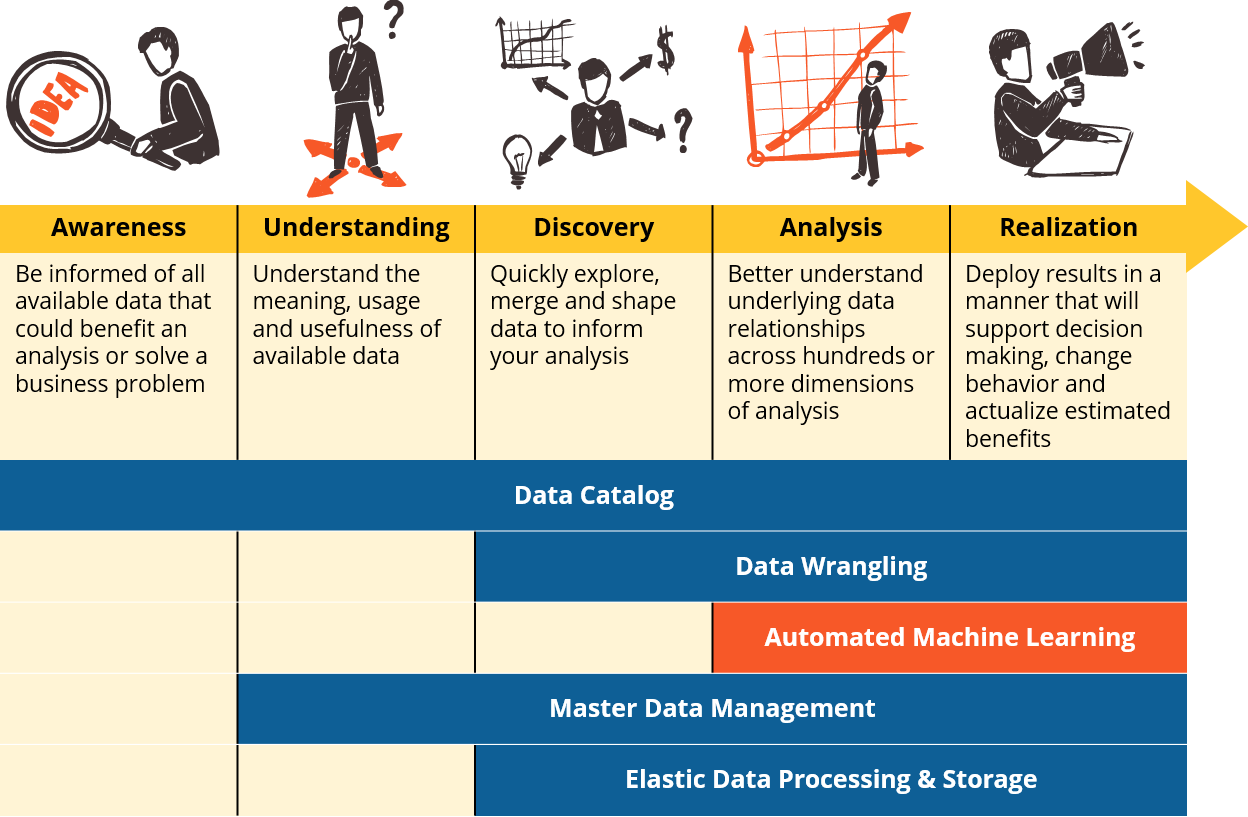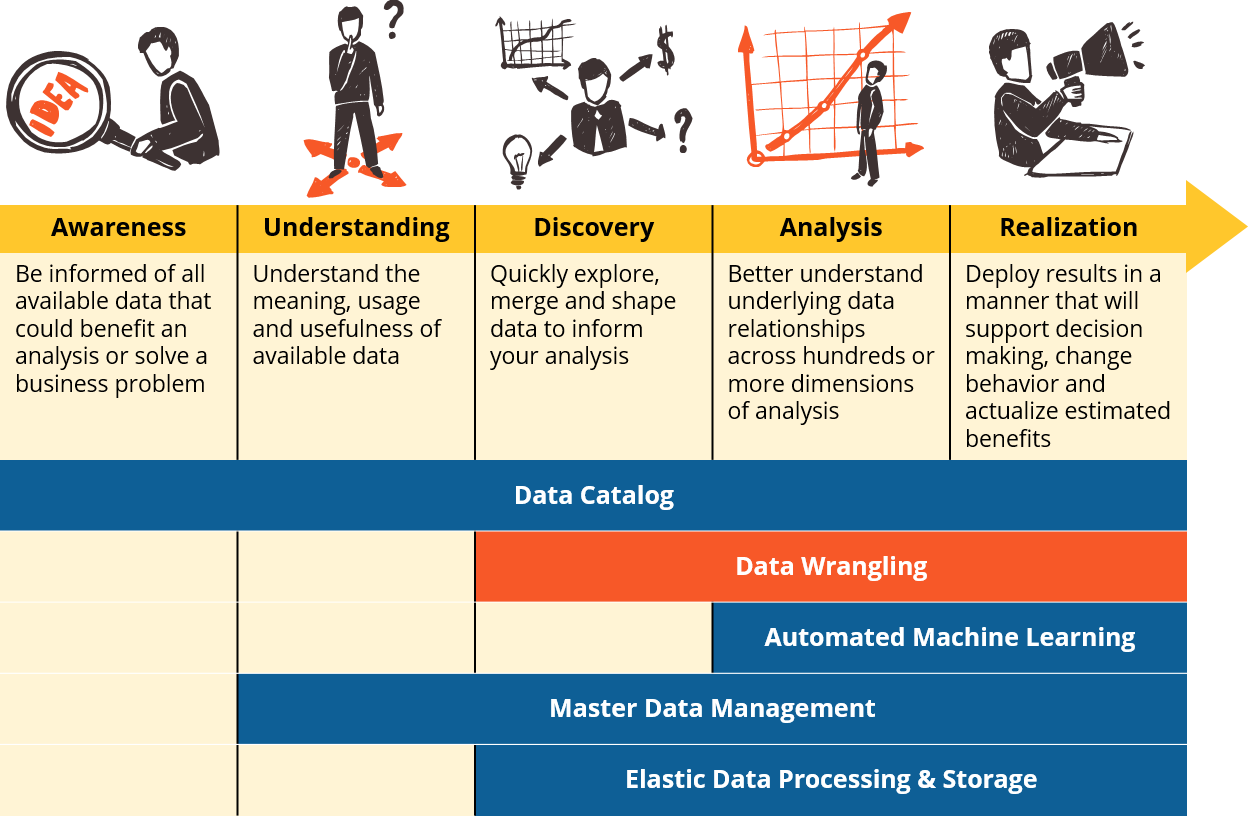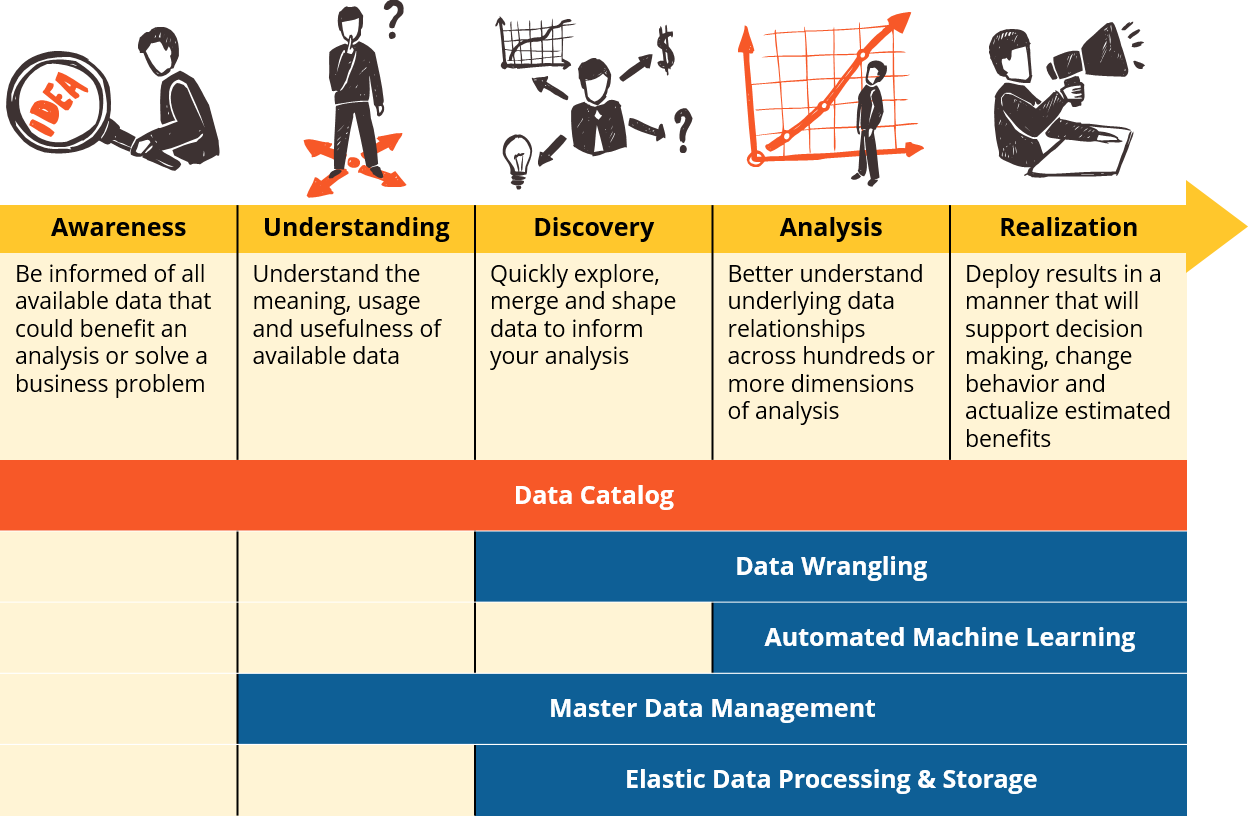This is part five in our five part series on the essential capabilities of the competitive data-driven enterprise.
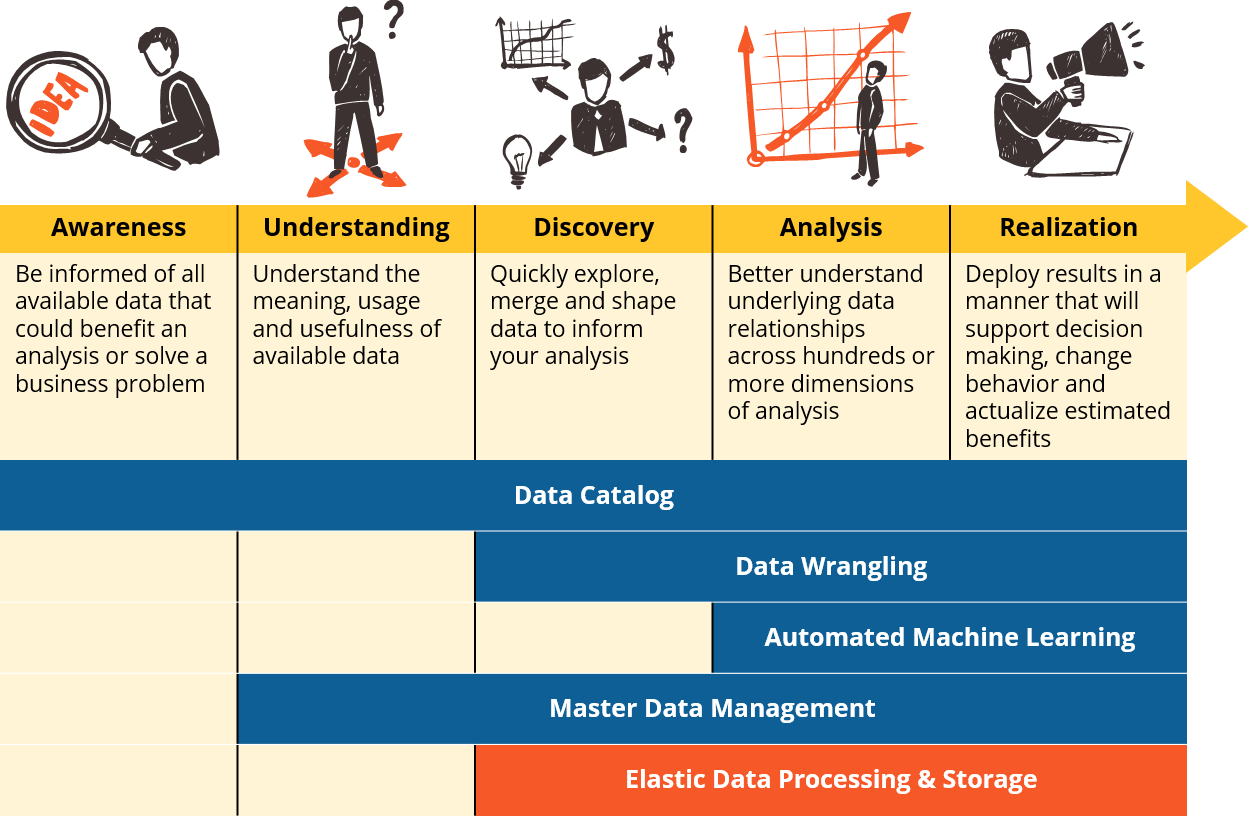
Over the last 20 years of doing business we have seen a number of different analytical data storage and query concepts fall in and out of favor. Throughout this time, a wave of digital transformation in business has dramatically increased the volume of collected data. Machine learning and other probabilistic methods benefit greatly from the law of large numbers so if by now it wasn’t already clear, all that talk about “big data” has really been about the analytics that it enables. As a result, today’s knowledge workers are predisposed to data hoarding, preferring to save everything including the data for which there are no known use cases, since its future value to the organization may still yet be discovered. Read more

